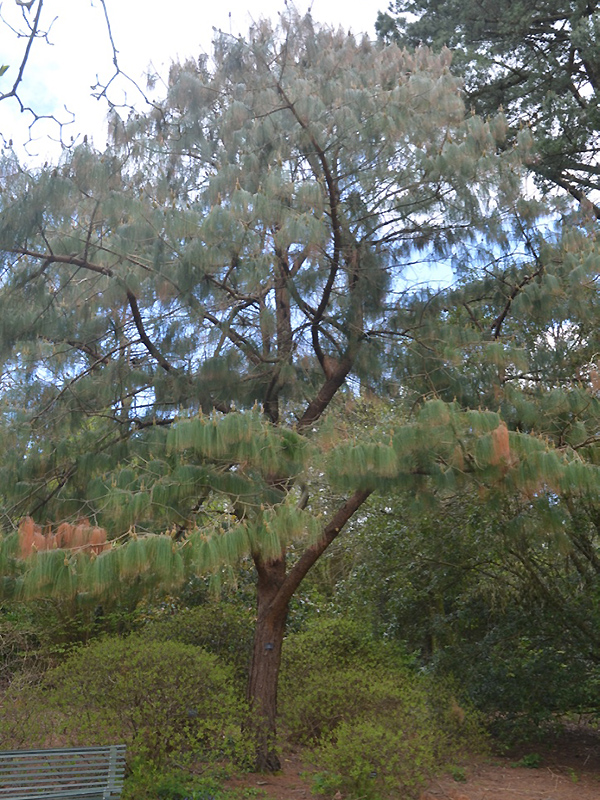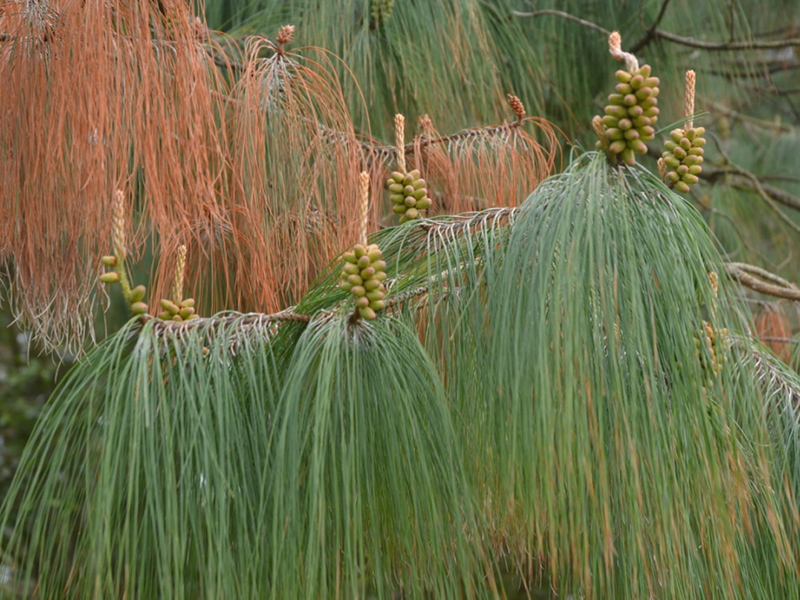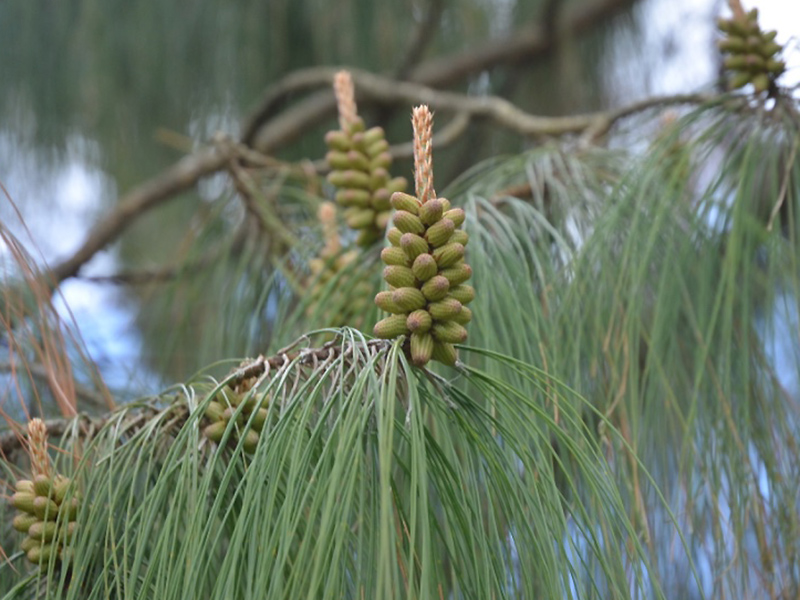Pinus patula (Patula Pine, Mexican Weeping Pine)
Michael's Opinion
Pinus patula is a large evergreen tree with a wide crown. It has very dense foliage with thin weeping needles. The sagging needles are a very distinct feature which makes it a point of focus in the landscape. Pinus patula grows in a fairly warm climate and a high altitude, but can withstand frost.
Botanical Information
| Family | Pinaceae |
| Genus | Pinus |
| Species | patula |
| Category | Woody |
| Type | Tree (evergreen) |
| Origin | Highlands of Mexico. |
| Pronunciation |
Details
| USDA Hardiness Zone | 7-10 |
| USDA Hardiness Ref. | |
| Canadian Hardiness Zone | 7-8 |
| Canada Hardiness Ref. | |
| RHS Hardiness Ref. | |
| Temperature (°C) | -10-(30) |
| Temperature (°F) | 15-(86) |
| Height | 45 m |
| Spread | 15 m |
| Growth | Fast |
| Flowering Period | January, February, March, April |
Description and Growing Information
| General Description | Pinus patula is a single stemmed tree with light green, large, sagging, thin needles. |
| Shape | Pinus patula is usually narrowly crowned, especially if it is grown with limited space, but can have a wider crown in open areas. |
| Landscape | A large tree that is performs best in the open by itself. Its wide spread and its attractive shape, make it useful as an accent tree. |
| Propagation | To scarify the seeds, soak them in water for 24 hrs; stratify them in cold for 60 days. Sow the seeds 5 mm deep at 4°C, tamp the media, and finally mulch. |
| Cultivation | Pinus patula prefers a very warm climate, high altitude, and well drained but moist, fertile, acidic soils. |
| Pests | Pests include leaf-eating beetles, adult bark beetles, and pine woolly aphid. Pinus patula suffers from a few diseases such as foliage leaf cast, tip die-back and armillaria root rot. |
| Notable Specimens | Trebah Garden Trust, Mawnan Smith, Falmouth, Cornwall, United Kingdom. National Trust Trelissick Garden, Feock, near Truro, Cornwall, United Kingdom. |
| Habitat | Pinus patula prefers grasslands and shrublands, as well as high altitudes and warm climates. Found in the highlands of Mexico. |
| Bark/Stem Description | The older bark is thick and rough and has a dark grey-brown colour and the younger bark is a red-brown colour which is very finely textured. |
| Flower/Leaf Bud Description | The terminal buds are cylindrical and are approximately 15–20 mm long while the lateral buds are a little shorter. The buds have scales and are not resinous. |
| Leaf Description | The needles on the Patula pine are 15–25 cm long, in bundles of 3-5 and are light green. They are very thin and they all droop downwards. |
| Flower Description | The female flowers are 5 cm, curvy, resembling a cob of corn. The male flowers are longer, scaly, and covered in pollen. |
| Fruit Description | Pinus patula has shiny scaled cones that can grow up to 10 cm long. They are a pale brown colour, strong, and can be in clusters of up to 10. The female flowers can appear when the tree is as young as 2 years old and male flowers can appear when it is 4 years old. |
| Colour Description | The needles are a light green colour. |
| Texture Description | Pinus patula is a very dense textured tree with needles year round to provide plenty of shade. |
Photographs
Pinus patula, form.
Pinus patula, leaf.
Pinus patula, form, Trebah Garden Trust, Mawnan Smith, Falmouth, Cornwall, United Kingdom.
Pinus patula, leaf, Trebah Garden Trust, Mawnan Smith, Falmouth, Cornwall, United Kingdom.
Pinus patula, male pollen cones, Trebah Garden Trust, Mawnan Smith, Falmouth, Cornwall, United Kingdom.

Pinus patula, form. National Trust Trelissick Garden, Feock, near Truro, Cornwall, United Kingdom.

Pinus patula, leaf. National Trust Trelissick Garden, Feock, near Truro, Cornwall, United Kingdom.

Pinus patula, flower. National Trust Trelissick Garden, Feock, near Truro, Cornwall, United Kingdom.

Pinus patula, bark. National Trust Trelissick Garden, Feock, near Truro, Cornwall, United Kingdom.